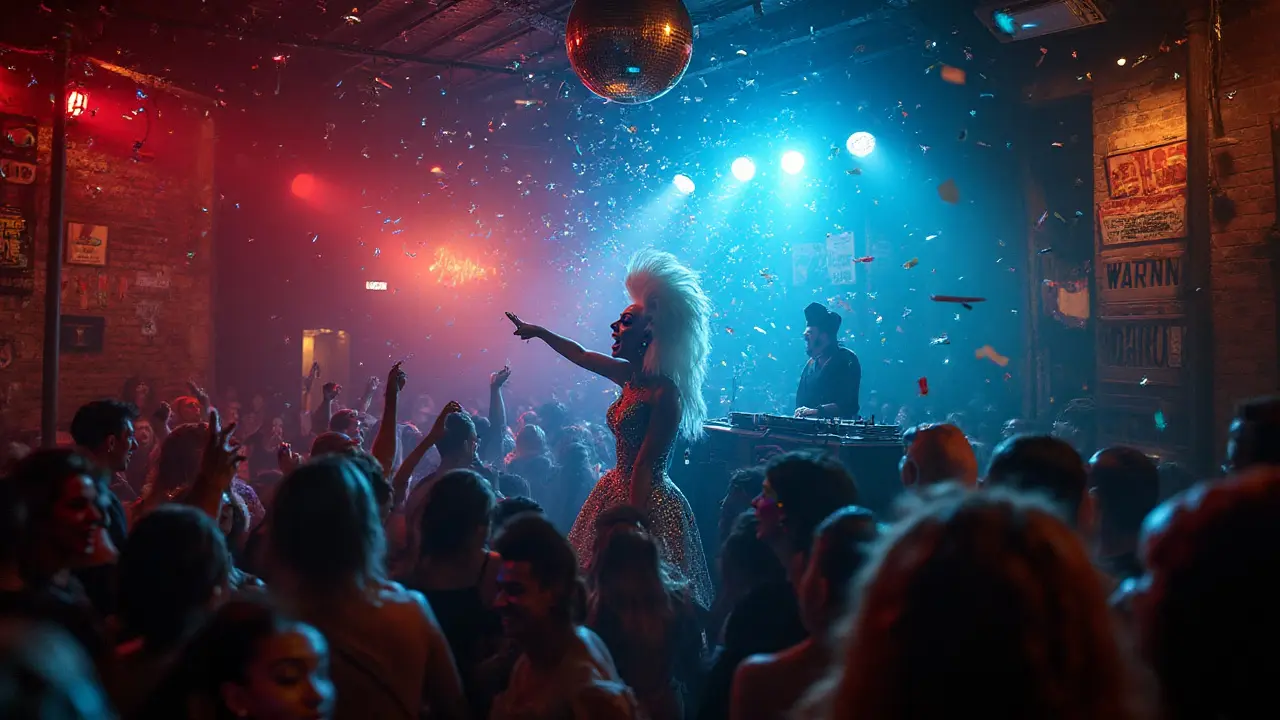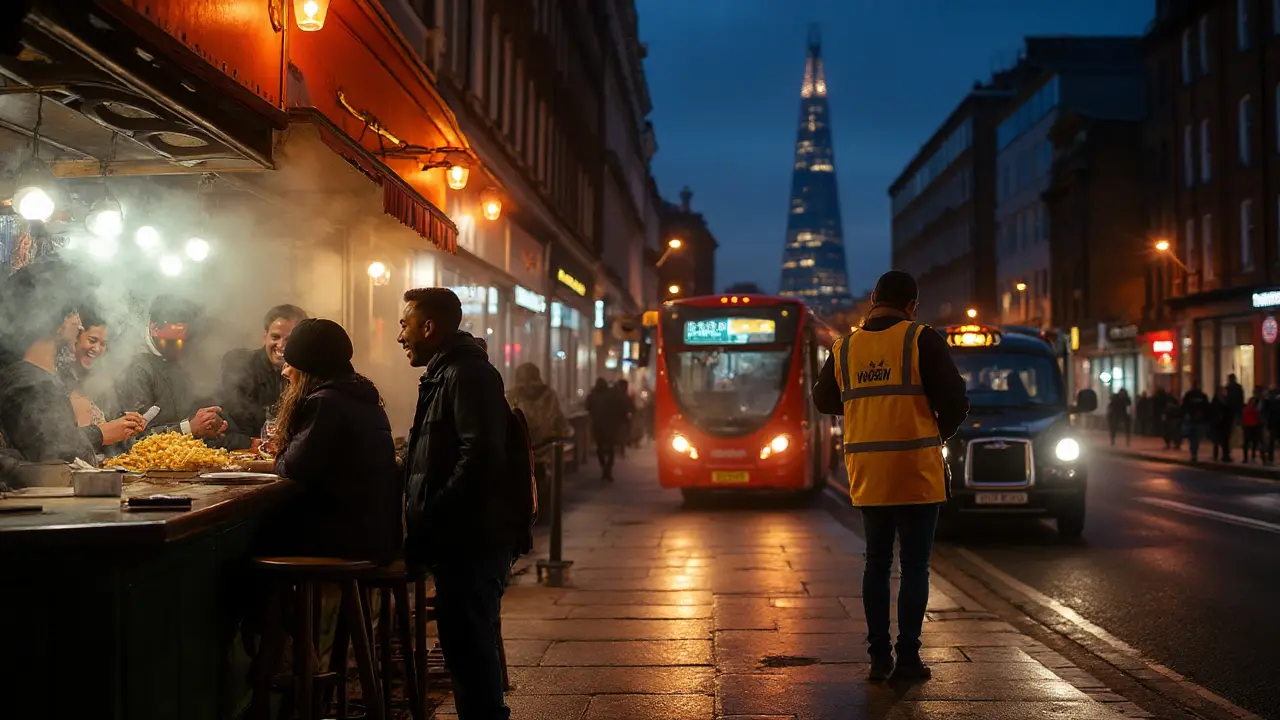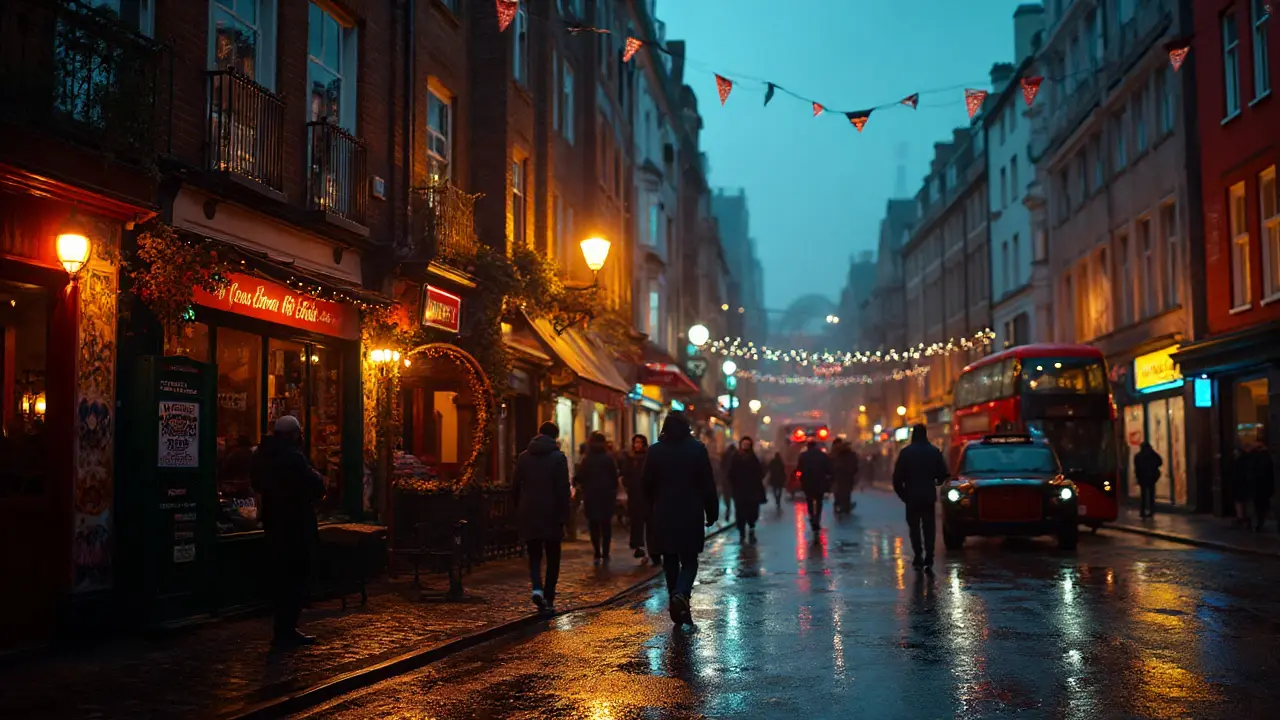London hums after midnight. Trains keep rolling on weekends, bars hide behind unmarked doors, and a jazz trumpet makes Soho feel timeless. If you want a night that actually hits-no lines for the wrong club, no last-train panic-this is your map.
London nightlife is wide, fast, and varied. Expect late-night transport (Night Tube on weekends), door policies that care about ID more than dress code, and scenes that shift by neighbourhood.
London nightlife is the after-dark culture of London, spanning bars, clubs, live music, comedy, and late dining across zones 1-3, supported by Night Tube (Fri-Sat), dense night bus routes, and venues ranging from historic jazz clubs (since 1959) to superclubs (1,000-1,600 capacity).
TL;DR
- Go area-first. Soho for cocktails and jazz, Shoreditch for creative clubs, Camden for live music, Brixton for bass-heavy nights.
- Travel smart. Night Tube runs Fri-Sat on key lines; contactless caps your fares.
- Book headliners. Fabric and Ministry sell out; grab tickets in advance via Resident Advisor or DICE.
- Eat late. Chinatown, Beigel Bake, and 24/7 spots keep you going after 2 a.m.
- Safety works here. “Ask for Angela” is active; stick with licensed cabs or the Night Tube.
How London nights actually work
London’s venues don’t all go late. Standard pubs shut around 11 p.m., bars stretch to 1-2 a.m., and clubs push 3-6 a.m. Many spots use ticketed entry to control queues. Bring a valid photo ID-yes, even if you look 35. Contactless payment rules the city; cash is fading out.
Transport is your friend. On Fridays and Saturdays, the Night Tube runs on the Victoria, Central, Jubilee, Northern (Charing Cross branch), and Piccadilly lines, with Night Overground from Highbury & Islington through Shoreditch to New Cross Gate. Night buses fill the gaps every night. Citymapper makes last-train times clear, and Transport for London caps your daily spend on contactless or Oyster.
Heuristics? Enter the club before midnight to dodge peak queues. Aim your last venue near your route home. If you’re going Mayfair, expect door checks; if you’re going East, expect creative crowds and sneakers.
Where to go: the right area for your night
Soho is a historic nightlife district in the City of Westminster known for theatres, cocktail bars, LGBTQ+ venues, jazz clubs, and late dining lanes around Old Compton Street and Dean Street.
Soho is compact and buzzing. Sip classics at Swift, sneak into Cahoots for 1940s train-car kitsch, or book a late set at Ronnie Scott’s. LGBTQ+ bars cluster around Old Compton Street, and restaurants stay open after shows spill out from the West End.
Shoreditch is an East London creative hub known for street art, house and hip-hop nights, speakeasy-style cocktail bars, and warehouse energy across Great Eastern Street to Hoxton.
Shoreditch leans lively and unpretentious. Pre-game at Tayēr + Elementary for high-spec drinks without the fuss, find a booth at Nightjar for Prohibition vibes, then cut to a club or late bar near Old Street. Expect sneakers, DJs, and queue-worthy pop-ups.
Camden Town is a North London music district tied to punk and alt culture, with venues like the Roundhouse, KOKO, and The Jazz Cafe anchoring gig-heavy nights.
Camden is for live sets and sticky-floored singalongs. Do an early show at KOKO, then wander to The Jazz Cafe for late grooves or into a rock bar that still spins Arctic Monkeys at 1 a.m. Street food around the market keeps you upright between gigs.
Brixton is a South London hotspot with Afro-Caribbean roots, big-room venues, and bass-led nights around Electric Avenue, Town Hall Parade, and Coldharbour Lane.
Brixton hits hard for dance music and live bands. Catch an earlier set at Electric Brixton, then pivot to a bar on Coldharbour Lane. When it’s open, the O2 Academy Brixton runs major shows under tighter safety rules as of 2024-2025.
Clubs and live music that actually deliver
Fabric is a multi-room London nightclub in Farringdon, opened in 1999, known for cutting-edge electronic lineups, a body-shaking main floor, and a capacity around 1,600.
Fabric is pure craft: serious sound, non-touristy crowd, and a roster that moves from underground techno to drum & bass weekends. Most big nights sell out-grab tickets on Resident Advisor in advance and arrive pre-midnight for a painless entry.
Ministry of Sound is a landmark London superclub near Elephant & Castle, launched in 1991, featuring multiple rooms, a famed main room (“The Box”), and a capacity near 1,500.
Ministry mixes legacy with spectacle. Expect polished production and international headliners. Dress is tidy, the door’s firm on ID, and the dance floor goes late. Perfect if you want big-room house and a classic London club story.
Ronnie Scott’s is a historic Soho jazz club founded in 1959, intimate at roughly 220 seats, hosting world-class jazz, soul, and funk sets nightly.
Ronnie’s is the gold standard for jazz in the city. Book seated tickets early, show up on time, and treat it like a show, not a bar. Late Late Shows past 11 p.m. are where visiting musicians drop in and the room loosens up.
Other heavy hitters worth your shortlist: KOKO (Camden; 1,500 capacity; grand theatre style), Village Underground (Shoreditch; brick arches; top-flight DJs), and Drumsheds (Tottenham; massive, warehouse scale; day-to-night events).
Cocktail bars and rooftops worth dressing up for
London drinks culture is serious without being stiff. Mayfair’s Connaught Bar keeps winning global awards for precise classics and a killer martini trolley, while Satan’s Whiskers (Bethnal Green) and Coupette (Bethnal Green) make East London feel like a bartender’s playground. Swift (Soho) splits the night: quick aperitivos upstairs, darker sips below. For tiki energy, Laki Kane (Islington) goes all-in.
Rooftops? Sky Garden brings lush views (book free tickets), Seabird (South Bank) serves seafood with sunsets, 12th Knot (South Bank) stays dressy, and Frank’s Cafe (Peckham, summer only) turns a car park into a warm-evening ritual.
LGBTQ+ nights and drag shows
Queer London is anchored but constantly reshuffling. Heaven (Charing Cross) still throws pop anthems and late finishes, Dalston Superstore blends dance floors with performance and community, and Bethnal Green Working Men’s Club flips between disco, cabaret, and down-to-earth chaos. Village Soho and Ku keep bar-hopping easy around Old Compton Street. For dancing with a show, track weekly lineups rather than relying on old lists-the scene updates fast.
Late-night eats that actually stay open
Chinatown is your post-midnight friend-no-frills noodle bowls, dim sum, and hot pots past 2 a.m. Brick Lane’s Beigel Bake runs all night; salt beef at 3 a.m. tastes better than it should. Duck & Waffle does sky-high 24/7 dining near Liverpool Street. VQ keeps classic comfort open late in central spots. If you’re South, Morley’s chicken shops are a rite of passage.
Comparison: which area fits your night?
| District | Best for | Music/Scene | Typical closing | Cost level | Pros | Watch-outs |
|---|---|---|---|---|---|---|
| Soho | Cocktails, jazz, LGBTQ+ bars | Live jazz, pop bars | Bars 1-2 a.m., clubs later | $$$ | Walkable, dense choices | Queues, pricey drinks |
| Shoreditch | Creative clubs, speakeasies | House, hip-hop, indie | 2-4 a.m. | $$ | Laid-back door, variety | Lines after 11 p.m. |
| Camden Town | Live gigs, alt bars | Rock, funk, soul | 1-3 a.m. | $$ | Great venues, late food | Weekend crowds |
| Brixton | Big rooms, bass-heavy nights | Afrobeat, D&B, house | 3-6 a.m. | $$ | Serious dance floors | Ticket checks strict |
| South Bank | Views, pre/post-theatre | Cocktails, wine bars | Midnight-1 a.m. | $$$ | River walks, rooftops | Less clubbing |

Plan like a local: tickets, queues, and money
Buy tickets early for big nights-Fabric, Ministry, and major live shows often sell out. Resident Advisor, DICE, and Skiddle cover most events. If a venue shows “last entry” on the ticket, they mean it. For free-flow evenings, book a first stop (a popular bar), then walk-in the rest.
Prices vary: pints hover around £6-£7 in central, cocktails hit £12-£20 at top bars, club entry ranges £10-£30 depending on the lineup. Contactless and Apple/Google Pay are accepted almost everywhere. Tips aren’t mandatory but leaving 10-12.5% at bars with table service is normal.
Safety, etiquette, and getting home
London’s “Ask for Angela” scheme runs in many bars and clubs-ask staff for “Angela” if you need help; they’ll step in. Keep drinks within sight, and watch your phone in busy queues. Official black cabs and licensed ride-hailing (Uber, Bolt) are reliable; check for the licence sticker. Night Tube plus night buses cover most post-midnight journeys-quickly check first and last trains on TfL or Citymapper before you order that last round.
Dress codes vary by area. East and Camden care more about vibe than smart shoes; Mayfair and some West End hotel bars expect sharper fits. Bring real ID (passport or driving licence). Door staff don’t budge on this.
Culture nights beyond the bar
Want art with your amble? Tate Modern and the V&A host late openings on selected Fridays with DJs and talks. The Southbank Centre runs weekend programs that blend concerts and riverside bars. West End theatres spill audiences by 10 p.m.-great time to snag a table at Chinatown or Covent Garden without queueing.
Area spotlights (with the essentials)
Soho essentials: Swift for pre-theatre sips; Bar Termini for tiny, perfect Italian-style cocktails; late sets at Ronnie Scott’s; a final lap down Old Compton Street. Expect crowded pavements and spontaneous detours.
Shoreditch essentials: Tayēr + Elementary’s seasonal Highballs; hidden booths at Nightjar; a hop to Village Underground for a DJ, or grab a gig at XOYO. Finish with a 24-hour bacon roll at Polo Bar near Liverpool Street.
Camden essentials: KOKO’s balcony views, The Jazz Cafe’s late grooves, and a final pint near the market. If it’s summer, pre-game on the canal before doors.
Brixton essentials: Warm up at a neighbourhood bar on Coldharbour Lane, choose a ticketed headliner (Electric Brixton) or a late DJ room, and build your route home via the Victoria line Night Tube.
Primary entities you’ll hear locals mention
West End is London’s central theatre district around Leicester Square, Covent Garden, and Piccadilly, feeding late-night dining and bar traffic after evening shows.
City of Westminster is the central London borough that includes Soho, Covent Garden, and Mayfair, with dense clusters of bars, theatres, and hotels.
Old Compton Street is Soho’s main LGBTQ+ artery, lined with bars and late-night venues that anchor pedestrian nightlife.
Related concepts and next reads
- West End shows and pre-theatre dining (broader culture topic)
- London craft beer taprooms in Bermondsey and Hackney Wick
- Gin distilleries and tasting rooms across London
- Thames night cruises and riverside bars
- Premier League match nights: fan pubs and post-game routes
Quick picks by mood and budget
- Date night: Connaught Bar for martinis, then a late walk on the South Bank.
- Big club energy: Fabric (techno/house) or Ministry (house/EDM). Buy tickets first.
- Live music: KOKO for spectacle, The Jazz Cafe for groove, Ronnie Scott’s for icons.
- Sober-friendly: Tate Late + rooftop soda at Sky Garden + Chinatown dessert.
- On a budget: Shoreditch happy hours, free galleries, Brick Lane beigels at 2 a.m.
Verified quick facts (useful and current)
- Night Tube runs Fri-Sat on Victoria, Central, Jubilee, Northern (Charing Cross branch), and Piccadilly lines (Transport for London).
- Contactless payment has daily/weekly caps; no need to buy paper tickets (TfL).
- Ronnie Scott’s opened in 1959 and remains London’s most famous jazz room (venue archives).
- Ministry of Sound launched in 1991, helping define UK club culture (venue history).
- Top London bars regularly appear in The World’s 50 Best Bars list (industry ranking).

Frequently Asked Questions
What time do London bars and clubs close?
Most pubs close around 11 p.m. Bars in central run to 1-2 a.m., and clubs go 3-6 a.m. depending on the night and venue. Fridays and Saturdays run later than weekdays, and some venues have “last entry” times-hit the door before midnight to be safe.
How do I get around after midnight?
On Fridays and Saturdays, the Night Tube runs on multiple lines, and Night Overground links Shoreditch to South London. Night buses run every night. Use Citymapper or TfL to check the last trains. Licensed black cabs, Uber, and Bolt work well in central areas. Pay with contactless; fares cap daily and weekly.
Do I need tickets for clubs like Fabric or Ministry of Sound?
Yes, for most headline nights. Buy in advance via Resident Advisor or DICE. If there’s space, you might get in with walk-up tickets early, but popular events sell out. Bring photo ID; staff check it at the door even if you look older.
What’s the best area for first-timers?
Start in Soho if you want a dense mix of bars, jazz, and late food within a short walk. If you prefer clubs and casual dress codes, go Shoreditch. For live music and easy late eats, Camden is a strong pick.
Where can I eat after 1 a.m.?
Chinatown has late-night restaurants seven days a week. Brick Lane’s Beigel Bake is 24/7 for quick bites. Duck & Waffle serves views with food all night near Liverpool Street. VQ also runs late kitchens in central areas.
Is London safe at night?
Stick to lit streets, stay with friends, and use licensed transport. Many venues run “Ask for Angela”-ask staff for help if you feel uncomfortable. Keep phones zipped in crowds and watch your drinks. Central areas are busy late, which helps.
What should I wear on a night out in London?
It depends on the venue. East London and Camden are sneaker-friendly. Mayfair, hotel bars, and some West End spots want smart-casual-closed shoes, neat shirts or dresses. Clubs with strict doors list dress policies on event pages; check before you go.
How much does a night out in London cost?
Expect £6-£7 for a pint in central, £12-£20 for cocktails at top bars, and £10-£30 for club entry depending on the lineup. Save by hitting happy hours, booking early-bird tickets, and clustering venues to avoid long rides.

